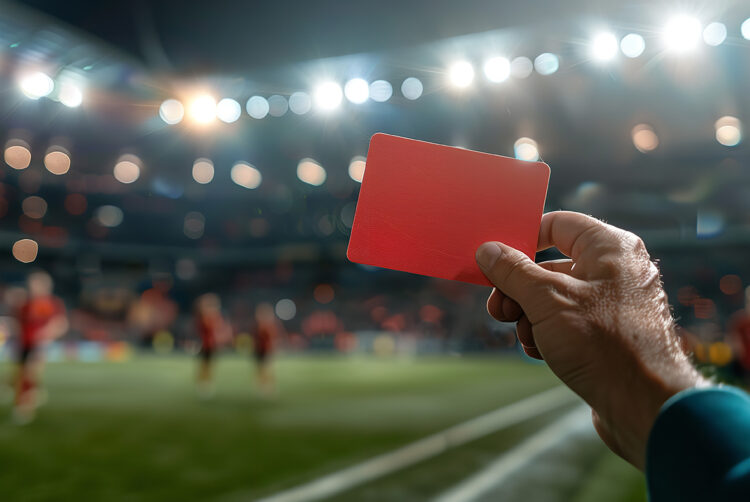How brands can avoid a red card during the summer of sport

Opinion
While the summer of sport may increase the chance of reaching consumers at scale, it also increases the chances of unsuitable placements or wasted spend.
For sports fans, this summer is shaping up to be an exciting prospect. Between the Uefa European Football Championship, Paris Olympics, Wimbledon, the men’s T20 World Cup and more, there truly is something for every sports fan.
Advertisers, too, will have long bookmarked this summer as the perfect opportunity to reach these audiences, with an Integral Ad Science consumer sports survey in February revealing that 91% of UK consumers are planning to watch at least one of the multiple events on offer.
A third of fans (31%) feel like ads are part of the experience of watching major sporting events, while one in four finds them helpful in discovering new products and services. And although linear TV still grabs the attention of 59% of viewers, increasingly it is digital environments where sports fans get their fix.
Almost half of UK sports watchers (43%) consume sports content online for at least an hour a day, while 49% use social media platforms such as YouTube and TikTok to watch clips. This level of interaction can lead to record-breaking levels of engagement. The most-liked Instagram post of all time is Lionel Messi lifting the 2022 Fifa World Cup trophy, while conversations around that tournament generated 147bn impressions on X.
Yet, while the summer of sport may increase the chance of reaching consumers at scale, it also increases the chances of unsuitable placements or wasted spend. So how can advertisers avoid these hurdles and take home gold this summer?
Staying out the sin bin
Sporting events are tense, fast-paced and unpredictable — a dream for fans but sometimes not for brands. In these tinderboxes where emotions run high and fortunes can change in a split second, the chances of brands finding their ads running alongside potentially unsuitable content increases.
Having the wrong ad in the wrong place at the wrong time can easily have a detrimental impact on a brand’s image. Nearly half of UK sports fans (49%) would be unlikely to recommend a brand to others if it was advertised near risky sports content, such as aggression or violence, while 46% would be unlikely to engage with that ad or subsequently purchase from that brand.
Within the sports environment, the negative sentiment around stories can be nuanced and not easily identified by outdated brand-safety blocklists. In the lead-up to the 2022 World Cup, discussion in many outlets centred on human rights violations of host nation Qatar. Traditional blocklists may have left advertisers either exposed to negative placements or cut off from potential audiences, as well as impacting publisher revenues.
Similarly, a brand may want to reach a Formula One audience by advertising next to online highlights while avoiding content that contains videos of crashes. With a traditional blocklist tool, this task becomes tougher.
This problem is exacerbated when it comes to user-generated content. While three-quarters (75%) of sports fans say that social media has enhanced their sports-watching experience, it can be particularly difficult for brands to navigate during sporting events. The spike in racist abuse in the aftermath of England’s 2020 Euro exit highlights the potential dangers to brands in these environments.
On the front foot
To avoid these potentially harmful situations, brands must ensure they have reviewed their brand-safety settings before the start of the summer of sport and prioritise solutions that can be tailored to the specific levels of risk.
AI plays a major role in more effectively determining the specific type and level of risk a piece of content has to a brand and can interpret tone, sentiment and emotion, as well as analysing video content frame by frame to ensure it doesn’t miss a beat.
This ensures that the huge uplift in the amount of content around these sporting events can be more effectively analysed, enabling better categorisation, in near real time. This can be deployed across a range of different media channels and is particularly effective in video.
With the increased potential for protests at this year’s events, such as those seen at the usually sedate World Snooker Championships, marketers will be able to better avoid unsuitable content during an event and afterwards, as it spreads across social media platforms.
This can make marketers’ lives so much easier, given that historically sporting sponsorships and commercial content around the events had to be bought and paid for months in advance. As a result, if something went wrong during an event, sponsors would often have to decide whether to pull an entire campaign or try to “ride out” the storm — neither of which is ideal.
By gaining more granular control of where their ads appear and being able to make timely decisions about placements, marketers can not only have added protection for their brand but also unlock precision targeting. Brands can target locations that are more contextually relevant to sports fans — whether that be content surrounding the wider sporting category, outlets that cater to sports and fitness enthusiasts or even content around a specific game.
This year’s summer of sport will be a golden opportunity for any advertiser to put themselves in pole position — but only if they have an effective brand-safety plan in place. Not only do legacy brand-safety tools lack the granular control needed to navigate the fast-moving content surrounding sporting events, but their imprecision leaves marketers failing to maximise their ad budgets during these tentpole events.
Like any good athlete, preparation is everything — and marketers must ensure they have the right tools in place if they are to finish first.
 Emma Jowett is vice-president, Northern Europe, at Integral Ad Science
Emma Jowett is vice-president, Northern Europe, at Integral Ad Science



